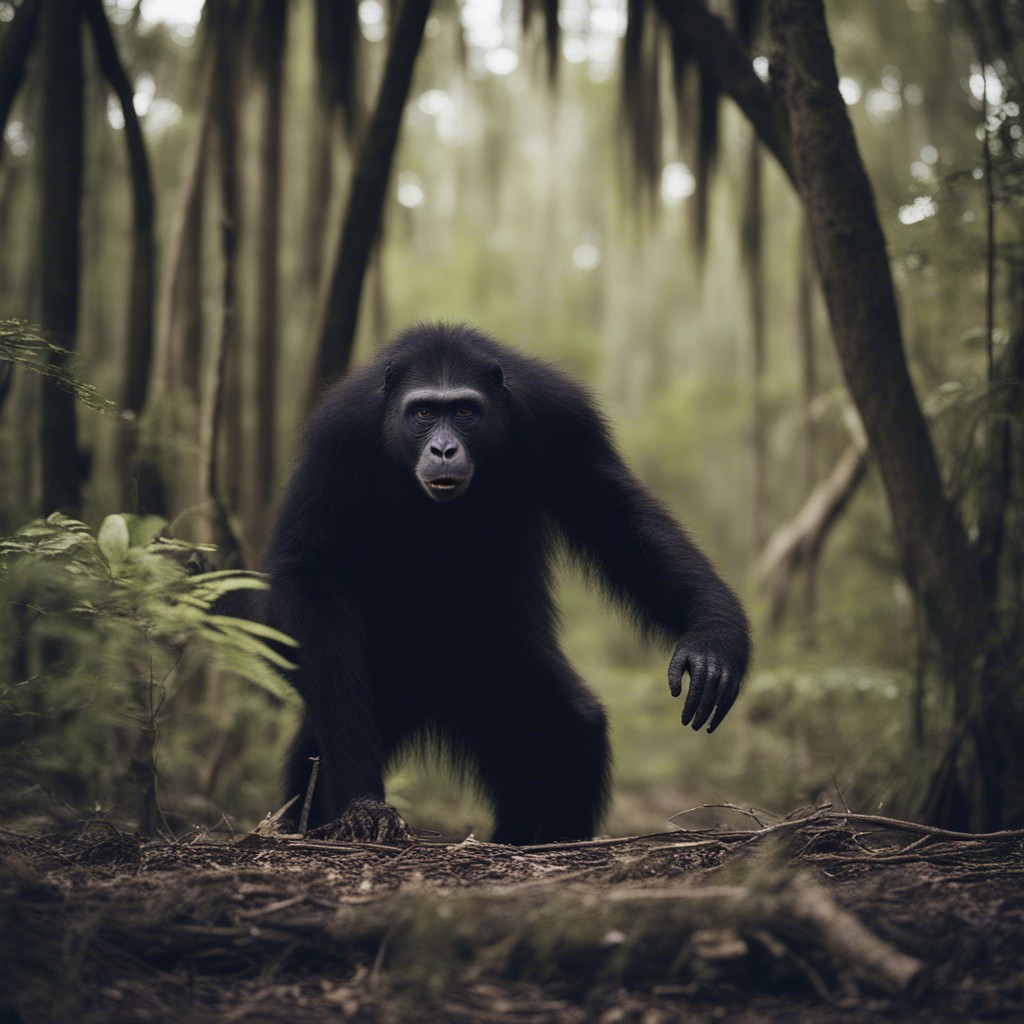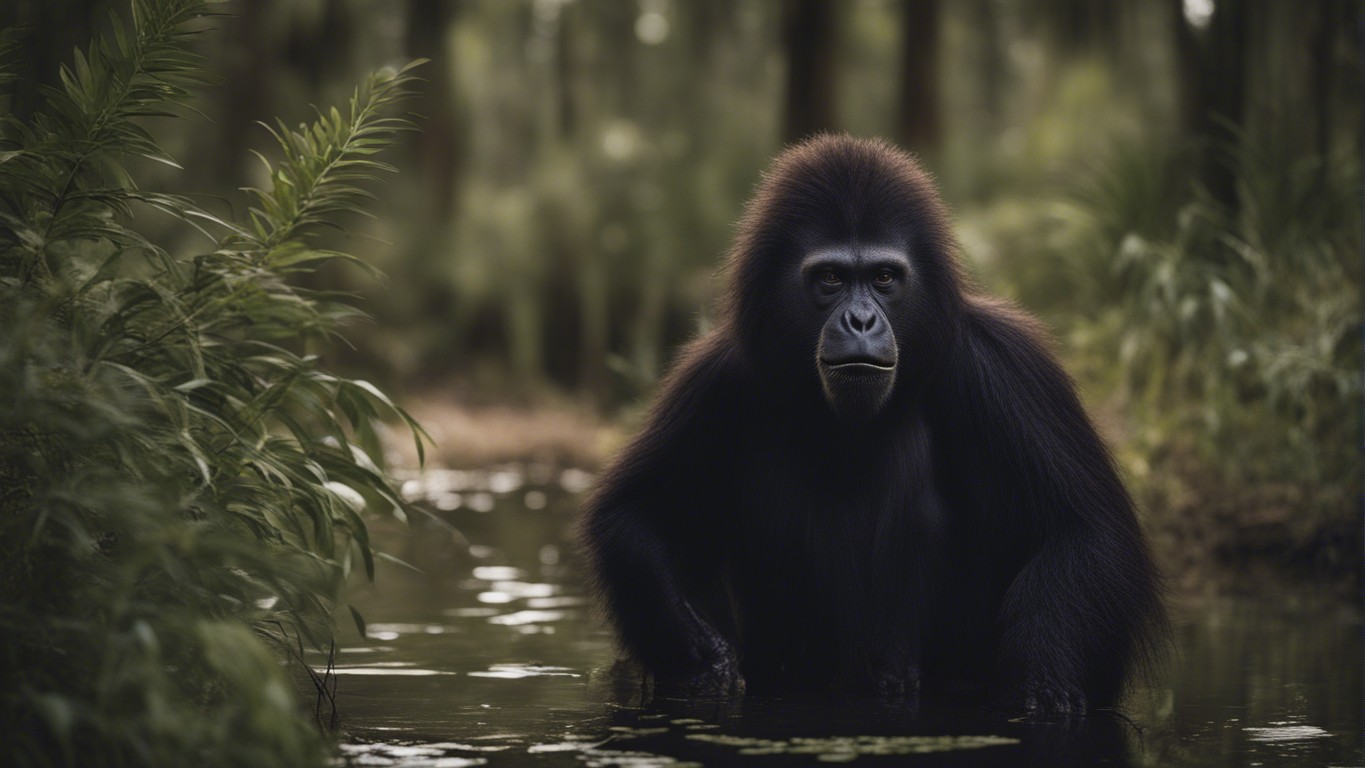The Mystery of the Skunk Ape: Florida’s Elusive Cryptid
Florida, the sunshine state, home to sandy beaches and vibrant cities, harbors a cryptic creature that is a conversation starter for both locals and tourists. Imagine, if you will, a figure standing tall in the swampy terrains, all wrapped in an aura of mystery and intrigue. This elusive being is known as the Skunk Ape, Florida’s own legendary cryptid that has been the subject of numerous eyewitness accounts, investigations, and debates. The name ‘Skunk Ape’ arises from its foul smell, which is reminiscent of rotten eggs or methane gas, and its bigfoot-esque nature.
From its legend to its sightings, each anecdote of the Skunk Ape is tinged with a whiff of mystery and a generous dose of thrill. While some dismiss it as a myth, others passionately argue for its existence. This cryptid has ignited the curiosity of folklorists, cryptozoologists, and mainstream scientists alike, making it an intriguing puzzle that’s begging to be solved.
“Skunk Ape sightings are no ordinary tales. They are narratives of man’s encounter with the unknown, stories that bring us face to face with the enigma that nature is.”
Whether you’re a lover of mysteries, a fan of cryptozoology, or simply someone planning to explore the Everglades, this guide is designed to offer you an insight into the world of the Skunk Ape. We’ll walk you through some of the best spots where sightings have been reported, and share some tips on how you can increase your chances of spotting this elusive creature. With insights from experts, we’ll delve into the research done on this cryptid, and discuss the evidence that could potentially lend support to its existence.
Let’s embark on this exciting journey deep into the heart of Florida’s swamps, and unravel the mystery that is the Skunk Ape.
The Legend and Sightings of the Skunk Ape

Deep in the heart of Florida’s Everglades, a legend has persisted for generations. Myth or reality, the tales of the Skunk Ape have captivated locals and visitors alike. So what is this mysterious creature all about?
The Skunk Ape, Florida’s very own boggy beast, is said to be a strange, foul-smelling creature that roams the swamps of the Sunshine State. Similar to Bigfoot, but more at home in swampy, subtropical conditions, the legend of the Skunk Ape traces back to Native American traditions and folklore.
It’s described as a hairy, ape-like creature standing over 7 feet tall, with a distinctive, pungent odor reminiscent of rotten eggs, hence the name ‘Skunk Ape’. Sightings often describe the creature as having glowing red eyes and a terrifying, guttural growl.
Sightings of the elusive Skunk Ape have been reported across the entire U.S.A, but the most concentrated sightings have been noted in Florida, specifically in the Everglades and the Big Cypress National Preserve. The first recorded sightings of the Skunk Ape dates back to the 1960s, and hundreds of accounts have emerged since then.
In 2000, there emerged what many consider to be the most tantalizing evidence of the Skunk Ape’s existence. An anonymous woman from Sarasota County sent two photographs of what appears to be a large, ape-like creature lurking in the undergrowth to the local Sheriff’s department.
She claimed it had been stealing apples from a basket on her back porch, and dissuaded any ideas that it was a bear, stating it moved with a limberness that only a primate could achieve.
Skeptics have suggested that the Skunk Ape sightings are simply misidentified wildlife, like black bears or escaped exotic pets. However, for many, these explanations aren’t enough. Regardless of whether you’re a believer or a skeptic, the legend of the Skunk Ape continues to live on, adding a layer of mystery and intrigue to the sun-soaked swamps of Florida.
The Best Spots for Skunk Ape Sightseeing in the Everglades
If you’re adventurous enough and wish to embark on a mini-expedition to possibly catch a glimpse of the elusive Skunk Ape, there’s no better place to start than within the sprawling wilderness of the Florida Everglades. This vast ecosystem is deemed the Skunk Ape’s stomping ground. However, remember it’s all about being at the right place at the right time!
The Everglades National Park
Most Skunk Ape sightings are reported from within the Everglades National Park, which boasts over 1.5 million acres of wetland. The Park offers several spots for potential Skunk Ape sightings.
One such area is Shark Valley, a beautiful looped trail encompassing a vast ecosystem rich in wildlife. With its dense forests and swampy marshes, it’s the perfect hideout for the Skunk Ape. Visiting in the dry season (November to March) may increase your chances as the water levels are lower, driving the Skunk Ape to roam more openly in search of food and water.
Big Cypress National Preserve
Another hotspot is the Big Cypress National Preserve, an hour’s drive from the Everglades National Park. This Reserve is drenched in subtropical moisture, creating a vast and dense swamp that is ideal for a creature like the Skunk Ape seeking solitude and cover.
An interesting spot within the Preserve is the Ochopee area. It’s home to the Skunk Ape Research Headquarters, where many enthusiasts begin their quest. The surrounding remote wilderness is yet another potential sighting spot.
Remember, the Skunk Ape is a creature of the night. So, consider guided night safaris in both the Everglades National Park and Big Cypress Preserve for potential encounters.
Cape Romano
The offshore Cape Romano, part of the Ten Thousand Islands, also reports occasional Skunk Ape sightings. Reachable only by boat, this remote island’s quiet, and untouched surroundings make it an ideal habitat for a cryptid like the Skunk Ape.
In conclusion, the best spots for Skunk Ape sightings are not just about the location. Consider factors like time, season, and your own alertness to capture a possible glimpse of this extraordinary creature. Don’t forget your camera and binoculars!
How can you increase their chances of spotting the Skunk Ape in the Everglades?
You’re probably buzzing with excitement at the thought of capturing a glimpse of the elusive Skunk Ape. The creature is known to inhabit the Florida Everglades, but remember, it’s still a cryptid, meaning your chances are variable. That said, there are strategies you can employ to increase your odds.
Pick the Right Time:
The Skunk Ape, like most wildlife, is thought to be most active during cooler parts of the day, primarily around dawn and dusk. These twilight hours are often referred to as ‘the magic hour’ by wildlife enthusiasts for the increased animal activity noticed during these times. So, set your alarm clock and get ready for an early start!
Use Local Guides:
Local guides familiar with the Everglades ecosystem can be invaluable resources. Their extensive know-how about local flora and fauna, plus years of navigating the vast and often challenging terrain of the Everglades, can significantly boost your chances. Local guides can guide you to the spots most frequented by the Skunk Ape as per the local folklore.
Be Quiet and Slow:
Cryptids or not, animals are naturally cautious and tend to shy away from noise and sudden movements. Stay as quiet as you can and move softly to improve your chances of sighting the Skunk Ape.
Bring Binoculars:
The Everglades is a vast area with diverse landscapes, and your naked eye can only see so far. A good pair of binoculars can help you spot disturbances in the terrain or movement among the trees that could indicate the presence of our furry cryptid.
Be Patient:
Patience is key in any wildlife spotting adventure, especially when you’re searching for a creature as elusive as the Skunk Ape. You are attempting to spot a creature that many people have spent their lives searching for with no avail. Take your time, embrace the journey, and enjoy the Everglades’ charming beauty as you embark on your cryptid quest.
Skunk Ape Research: Insights from the Experts
You’ve likely heard the captivating tales and riveting accounts of the Skunk Ape sightings. Yet, you may be asking yourself, are these simply fanciful stories or part of Florida’s intricate folklore? This myriadic creature, also known as the Florida Bigfoot, has been the center of ongoing research by both amateurs and professionals alike. Let’s delve into the insights and ongoing investigations provided by the experts.
Dr. David Shealy’s Pioneering Research
Considered one of the most reputable Skunk Ape researchers, Dr. David Shealy has dedicated most of his life to studying this elusive creature. His first encounter with the Skunk Ape at a young age sparked an unwavering quest for evidence that this creature exists. Over the decades, Shealy has collated an impressive 200-plus reports of sightings, and he continues to monitor and document Skunk Ape trails in the Florida Everglades today.
Loren Coleman’s Cryptid Exploration
In the realm of cryptozoology, few names resonate as boldly as Loren Coleman. Coleman is not only a renowned cryptozoologist but also the director of the International Cryptozoology Museum in Portland, Maine. His dedicated exploration into cryptids, including the Florida Skunk Ape, has given him a broad perspective and incisive insight into the existence of these elusive creatures.
Science Contemplates the Skunk Ape
While the scientific community at large remains skeptical about the Skunk Ape’s existence, there is a small faction of scientists who believe it’s a creature worth investigating. In 2000, an unidentified hair sample, claimed to be from a Skunk Ape, was sent for DNA analysis. While it was eventually matched to a common black bear, these proactive measures to separate legend from fact continue to fuel the debate.
Despite current limitations, research surrounding the Skunk Ape continues to evolve. As technology and investigative techniques improve, there’s a growing sense of optimism that, one day, the mystery of this fascinating cryptid could be unveiled.
What evidence exists to support the existence of the Skunk Ape?
Although the existence of the Skunk Ape remains a point of contention for skeptics and believers alike, there are several pieces of evidence that seemingly lend credibility to its existence.
Photographic Evidence: Since the adoption of portable cameras, numerous photos and videos have surfaced purporting to feature the elusive Skunk Ape. Perhaps the most infamous is the “Myakka Skunk Ape Photos” taken in 2000. An anonymous letter sent to the Sheriff’s Office in Sarasota, Florida, contained two photos alleged to depict the nocturnal creature. The sender claimed the beast had been stealing apples from their backyard. Unfortunately, despite the photos’ captivating detail, they have not yet been verified as authentic.
Physical Evidence: Over the years, there have been a number of intriguing physical traces attributed to the Skunk Ape. These include unidentifiable hair samples, oddly large footprints, and damage to vegetation. Additionally, there’s the often cited and potent skunky smell associated with Skunk Ape sightings. Critics, however, argue that such evidence could be the work of known animals or are simply fabricated.
Eye-Witness Accounts: The vast majority of evidence supporting the Skunk Ape’s existence comes from eyewitness accounts. Since at least the 1960s, scores of individuals have reported seeing the creature across the southern region of Florida. Reported characteristics often include the creature’s height, reddish fur, and distinct strong odor. To date, these sightings remain unsubstantiated due to lack of definitive physical evidence.
No debate about the existence of such elusive creatures can be complete without addressing the skeptics. Science questions the authenticity of the evidence, often attributing sightings to misidentifications of known wildlife or occasional pranks. Without irrefutable evidence, the scientific community generally remains skeptical. Still, the compelling swath of anecdotal evidence has drawn many believers, keeping the legend of the Skunk Ape alive and well.
Contrasting views aside, the mystery surrounding the Skunk Ape continues to captivate and fascinate. While we may not have conclusive proof of the Skunk Ape’s existence just yet, there’s no denying the incredible allure of this Southern cryptid.
Conclusion
After exploring the mystery of the Skunk Ape, it’s clear that Florida’s elusive cryptid continues to pique the interest of locals, tourists, and experts alike. Its existence might not be scientifically proven, but the volume and consistency of the sightings, coupled with the intriguing research from leading cryptid scholars, most importantly Dr. David Shealy and Loren Coleman adds weight to the Skunk Ape legend.
Whether you’re a firm believer or a curious skeptic, there’s undeniable excitement in the possibility of catching a glimpse of this elusive creature during a visit to the Everglades. If you do decide to try your luck, remember to respect the habitat, not only for the potential Skunk Ape but also for all the different species that genuinely reside in the Everglades.
Considering the lack of physical evidence, it’s important to approach the Skunk Ape legend with a balanced view. While it’s delightful to imagine the existence of such a cryptid, conserving and protecting the environment where it allegedly dwells should always remain our top priority.
In conclusion, the Skunk Ape presents a fascinating study in Florida folklore. Despite the absence of scientific validation, it remains an emblem of the state’s rich biodiversity and an evergreen lure for thrill-seekers, cryptid enthusiasts, and naturalists. The allure of the Skunk Ape is less about its actual existence and more about the mystery that surrounds it, highlighting the enigmatic beauty of nature and our innate fascination with the unknown.







